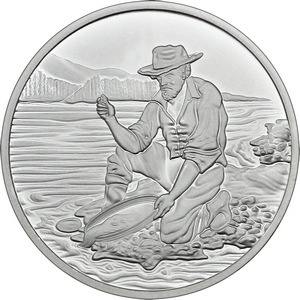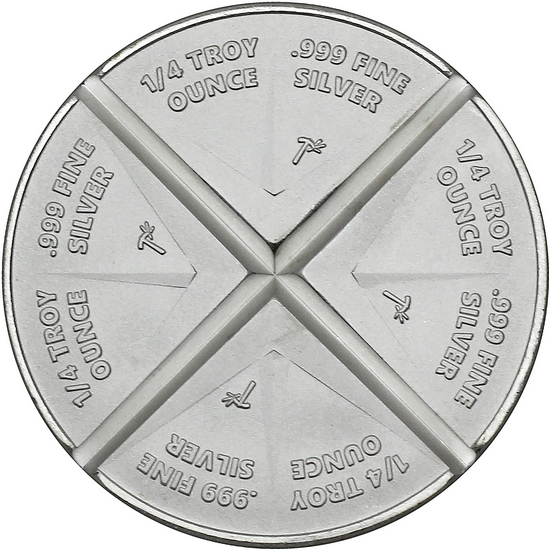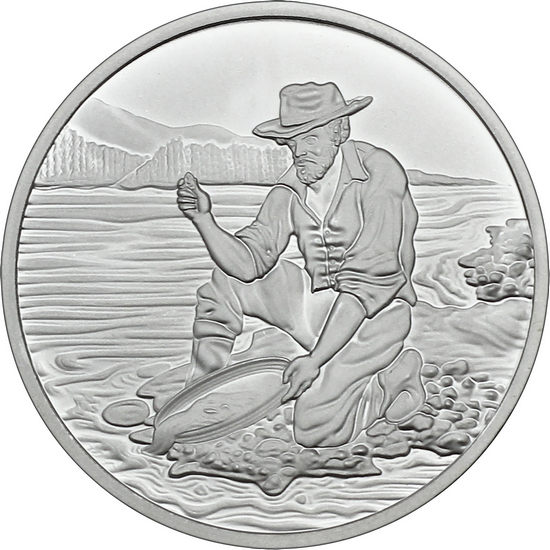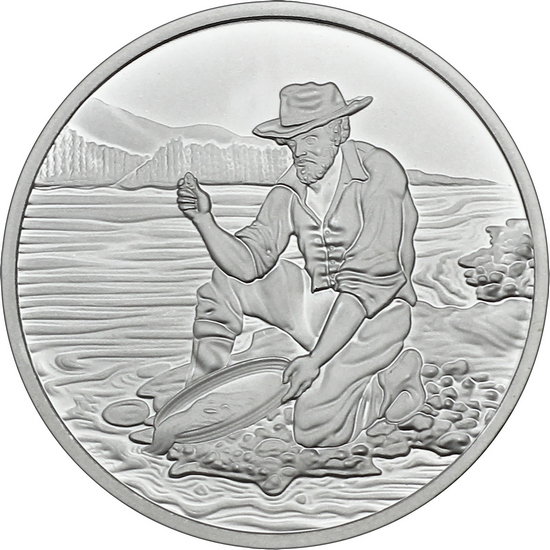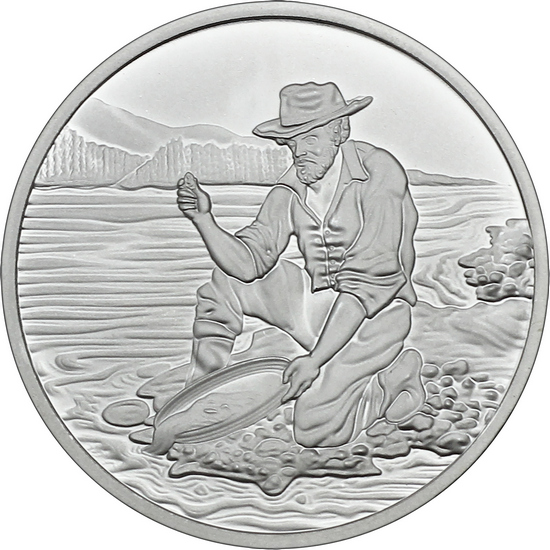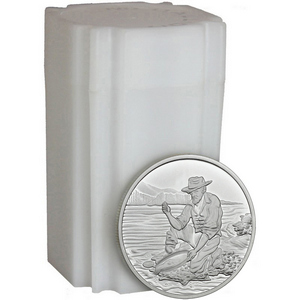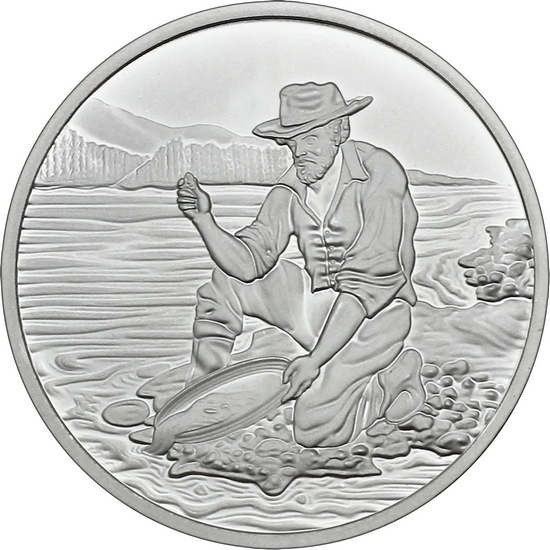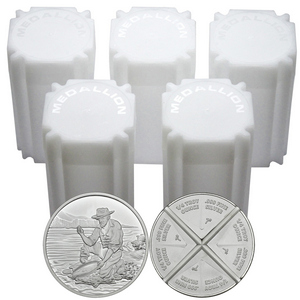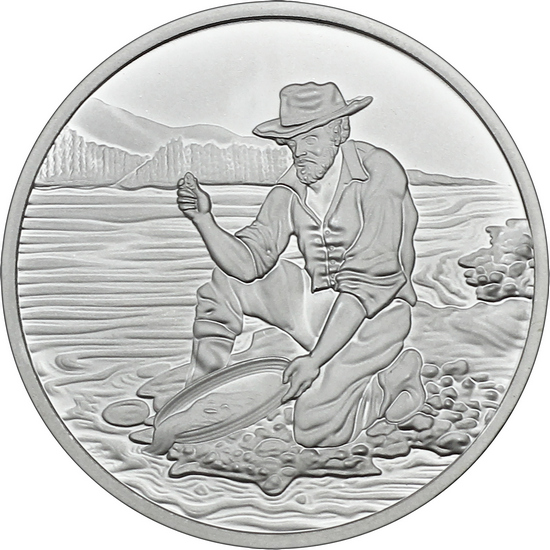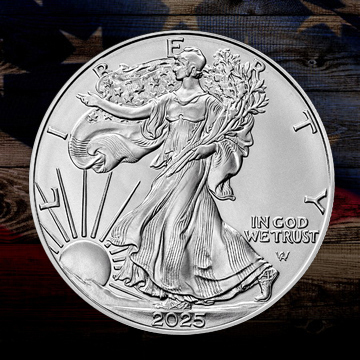SilverTowne Prospector Divisible 1 Ounce Silver Medallions

Divisible in Fourths ST Prospector Miner Goldpanner 1oz Total Rounds
Gold Rush Prospectors
The allure of gold has captivated humanity for centuries, sparking dreams of wealth and adventure. The term 'Gold Rush' evokes images of miners braving the wilderness in search of fortune, particularly during the famous rushes of the 19th century in places like California and Alaska. These historical events not only transformed local economies but also shaped cultural identities. Today, the legacy of the gold rush continues to resonate, inspiring collectors and investors alike to explore the world of gold and silver bullion. Join us as we delve into the fascinating history of gold rushes, innovative mining techniques, and the art of collecting precious metals.
The History of Gold Rushes
The quest for gold has driven countless individuals to seek fortune and adventure throughout history, leading to some of the most significant migrations and settlement patterns, particularly in the United States. Among the most notable events are the California Gold Rush of 1849 and the Klondike Gold Rush of the late 1890s, which not only transformed landscapes but also reshaped societal structures.
The California Gold Rush began in January 1848 when gold was discovered at Sutter's Mill, leading to an influx of prospectors known as '49ers.' This monumental event attracted over 300,000 people to California, marking a turning point in the state's history. The rush catalyzed the rapid growth of towns and cities, such as San Francisco, which evolved from a small settlement into a bustling metropolis almost overnight. Similarly, the Klondike Gold Rush started in 1896 when gold was found along Bonanza Creek in Yukon, Canada. This discovery led to a massive migration of around 100,000 prospectors, many of whom traveled through perilous terrain to reach the goldfields, a journey reminiscent of today's adventures depicted in shows like Gold Rush White Water and Gold Rush Alaska. The rush significantly impacted the development of the region, leading to the establishment of new settlements and the expansion of existing ones.
Gold rushes not only influenced migration patterns but also had profound economic and social consequences for local communities. As thousands flocked to gold-rich areas, the demand for goods and services skyrocketed, resulting in the rapid development of infrastructure. Towns sprang up to support the influx of miners, with businesses catering to their needs, ranging from general stores to saloons. However, this sudden population boom often strained local resources and led to challenges, including lawlessness, inflated prices, and environmental degradation.
In addition to immediate economic impacts, gold rushes also fostered a spirit of entrepreneurship and innovation. Many individuals who arrived in search of gold found opportunities in various industries, contributing to the long-term economic development of their communities. For instance, the California Gold Rush led to advancements in transportation, with the construction of railroads and roads to facilitate the movement of goods and people. These infrastructural developments helped lay the groundwork for California's future as a thriving economic powerhouse.
Socially, gold rushes transformed the demographic landscape of the regions they touched. Diverse groups, including immigrants from Europe, Asia, and South America, converged in the hopes of striking it rich. This melting pot of cultures contributed to the unique social fabric of many towns, although it also sparked tension and conflict over resources and opportunities.
In summary, the history of gold rushes is not merely a tale of fortune seekers; it is a narrative woven with themes of migration, community building, and economic transformation. The legacies of these events continue to resonate, reminding us of the profound impact that the quest for gold has had on the development of the United States.
Definition and Meaning of a Prospector
The term 'prospector' harks back to the gold rushes of the 19th century, notably when thousands flocked to California in search of fortune. These early prospectors were pivotal in the expansion of the United States, venturing into untamed landscapes and enduring harsh conditions in their quest for precious metals like gold. Their discoveries shaped not only local economies but also influenced migration patterns and the establishment of new communities.
Today, the meaning of prospector encompasses categories such as mineral prospectors, gem prospectors, and treasure hunters. Mineral prospectors focus on locating deposits of minerals like gold, silver, and copper, while gem prospectors search for stones like diamonds and sapphires. Treasure hunters pursue lost artifacts and historical treasures, often involving a mix of historical research and excavation.
Prospecting continues to be a driving force in various industries, including mining and jewelry. The extraction of minerals is essential for infrastructure and electronics, while gemstones remain central to the luxury market. Prospecting captures the imagination of many, as it intertwines economic development and innovation.
Gold Mining Techniques
During the gold rush era, spanning from the mid-19th century to the early 20th century, traditional gold mining methods such as panning, sluicing, and hard rock mining were prevalent. Panning involved using a shallow pan to sift through river sediments, allowing lighter materials to wash away while heavier gold particles remained. This method was particularly popular among individual prospectors looking for quick results in rivers and streams. Sluicing utilized a long, narrow box lined with riffles to trap gold as water flowed through, making it more efficient for larger operations. Hard rock mining required digging tunnels into the earth to extract gold ore directly from its source, demanding significant investment in equipment and labor.
As the gold rush era came to a close, advancements in technology transformed the landscape of gold mining. Today, modern techniques have revolutionized the industry, making it more efficient and effective. Techniques such as heap leaching, where cyanide is used to dissolve gold from ore, have allowed for the extraction of gold from lower-grade ores previously deemed unprofitable. High-capacity excavators and automated drilling equipment have significantly increased productivity, reducing manual labor requirements. Satellite imaging and geophysical surveys now aid in identifying potential gold deposits, enabling mining companies to target areas with higher likelihoods of success.
However, the environmental impact of gold mining remains a critical concern. Traditional methods often led to habitat destruction, water pollution, and soil erosion. The introduction of modern techniques has attempted to mitigate these effects, but challenges remain. Sustainable practices are now at the forefront of the industry, with many companies adopting measures to minimize their ecological footprint. These include responsible water management, rehabilitation of mined land, and the use of environmentally friendly chemicals in processing. For instance, some companies are exploring biodegradable alternatives to harmful substances traditionally used in gold extraction. Additionally, the push for ethical sourcing has prompted many miners to adhere to strict guidelines prioritizing environmental and social responsibility.
At SilverTowne, we recognize the importance of understanding gold mining techniques, both historical and modern. Whether you’re investing in gold bullion or seeking unique gold collectibles, knowledge of the industry can enhance your appreciation of these precious metals. Our extensive selection of gold and silver products is not only a testament to the rich history of gold mining but also reflects ongoing innovations and practices that shape the industry today.
Collecting Silver Bullion
Silver has long been celebrated a symbol of wealth and stability. Throughout history, precious metals have played an essential role in various cultures, serving not only as currency but also as a store of value. In contemporary times, investing in silver bullion has become increasingly popular, as individuals seek to diversify their portfolios, hedge against inflation, and preserve their wealth. As tangible assets, silver bullion can provide a sense of security that paper investments may lack, making them a significant part of many collectors' and investors' strategies.
Among the unique offerings available at SilverTowne is the goldpanner divisible 1oz silver round, featuring a design of a prospector panning for gold. This round stands out due to its ability to be broken apart into four equal 1/4 ounce pieces. Adding these to a silver collection will add interest and intrigue, reflecting the adventurous spirit of the gold rush days akin to the challenges faced in Gold Rush White Water and Gold Rush Alaska.

